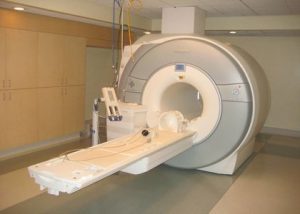- Home
- Editorial
- News
- Practice Guidelines
- Anesthesiology Guidelines
- Cancer Guidelines
- Cardiac Sciences Guidelines
- Critical Care Guidelines
- Dentistry Guidelines
- Dermatology Guidelines
- Diabetes and Endo Guidelines
- Diagnostics Guidelines
- ENT Guidelines
- Featured Practice Guidelines
- Gastroenterology Guidelines
- Geriatrics Guidelines
- Medicine Guidelines
- Nephrology Guidelines
- Neurosciences Guidelines
- Obs and Gynae Guidelines
- Ophthalmology Guidelines
- Orthopaedics Guidelines
- Paediatrics Guidelines
- Psychiatry Guidelines
- Pulmonology Guidelines
- Radiology Guidelines
- Surgery Guidelines
- Urology Guidelines
MRI Implant to accurately pinpoint electrical activity in brain

Massachusetts: MIT engineers have devised a new technique to detect either electrical activity or optical signals in the brain using a minimally invasive sensor for magnetic resonance imaging (MRI).
The study published in the journal Nature Biomedical Engineering reveals that MRI sensor can detect tiny electrical currents, as well as light produced by luminescent proteins. (Electrical impulses arise from the brain's internal communications, and optical signals can be produced by a variety of molecules developed by chemists and bioengineers.)
Read Also: Carotid artery MRI improves risk assessment for cardiovascular disease
This kind of sensor could give neuroscientists a spatially accurate way to pinpoint electrical activity in the brain. It can also be used to measure light, and could be adapted to measure chemicals such as glucose,
Researchers commonly study brain function by monitoring two types of electromagnetism -- electric fields and light. However, most methods for measuring these phenomena in the brain are very invasive.
Now researchers at MIT are adapting MRI technology, coupled with a tiny implant, to be able to measure both electric fields and light at excellent spatial resolution. Previously, the same would require extremely invasive procedures, with wires protruding from the head, that essentially make it impossible to do so in most cases.
"MRI offers a way to sense things from the outside of the body in a minimally invasive fashion," says Aviad Hai, an MIT postdoc and the lead author of the study. "It does not require a wired connection into the brain. We can implant the sensor and just leave it there."
MRI works by detecting radio waves emitted by the nuclei of hydrogen atoms in water. These signals are usually detected by a large radio antenna within an MRI scanner. For this study, the MIT team shrank the radio antenna down to just a few millimeters in size so that it could be implanted directly into the brain to receive the radio waves generated by water in the brain tissue.
Read Also: New MRI device with built-in irradiation for Tumour irradiation
The sensor is initially tuned to the same frequency as the radio waves emitted by the hydrogen atoms. When the sensor picks up an electromagnetic signal from the tissue, its tuning changes and the sensor no longer matches the frequency of the hydrogen atoms. When this happens, a weaker image arises when the sensor is scanned by an external MRI machine.
The researchers demonstrated that the sensors can pick up electrical signals similar to those produced by action potentials (the electrical impulses fired by single neurons), or local field potentials (the sum of electrical currents produced by a group of neurons).
One major advantage of this sensor is that it does not need to carry any kind of power supply because the radio signals that the external MRI scanner emits are enough to power the sensor.

Disclaimer: This site is primarily intended for healthcare professionals. Any content/information on this website does not replace the advice of medical and/or health professionals and should not be construed as medical/diagnostic advice/endorsement or prescription. Use of this site is subject to our terms of use, privacy policy, advertisement policy. © 2020 Minerva Medical Treatment Pvt Ltd